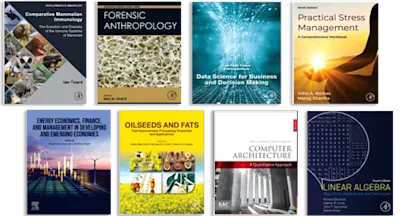
Echo Made Easy
- 3rd Edition - September 9, 2016
- Imprint: Elsevier
- Author: Sam Kaddoura
- Language: English
- Paperback ISBN:9 7 8 - 0 - 7 0 2 0 - 6 6 5 7 - 3
- Paperback ISBN:9 7 8 - 0 - 7 0 2 0 - 6 6 5 6 - 6
Echocardiography (echo), the use of ultrasound to examine the heart, is a powerful and safe technique which is now widely available for cardiovascular investigation. This simple an… Read more
Purchase options

Echocardiography (echo), the use of ultrasound to examine the heart, is a powerful and safe technique which is now widely available for cardiovascular investigation. This simple and highly praised text is a practical and clinically useful introduction to the subject. It aims to explain the echo techniques available, outlines what they are most suitable for, and most importantly puts echo into a clinical perspective. This book will be of value to all those who use or request echo, particularly doctors in training and medical students, but also physicians, surgeons, general practitioners, technicians, nurses and paramedics.
This Third Edition takes full account of recent advances in echocardiography. A new chapter on performing and reporting an echo has been added. New text has been added on the role of echo in individuals with cancer and in diseases of the aorta. There are updated and expanded sections on pregnancy, the continuity equation, diastolic function, long-axis function and 3-D echo. There are also updates and more detailed sections on the use of echo in emergency situations, in cardiomyopathies and pericardial diseases, in congenital abnormalities and in cardiac resynchronization therapy. Up-to-date published international guidelines have been referenced throughout.
New online content is available in the form of echo video images with accompanying self-assessment questions which will allow the reader to carry out self-assessment of knowledge and to see examples of the echos described in the text.
- This highly-praised book is a simple guide to a difficult subject, written in a conversational and accessible style. It is essential reading for anyone wishing to learn about echo – doctors in training, cardiac technicians, medical students etc.
- It provides full practical coverage of the clinical aspects of heart disease
- It will be of great use to those experienced in echo both as a refresher and an accessible reference source
- Medical students
- Junior doctors
- Cardiac technicians
Acknowledgements
Abbreviations
1 What is echo?
1.1 Basic notions
1.2 Viewing the heart
1.3 Echo techniques
1.4 Normal echo
1.5 Who should have an echo?
1.6 Murmurs
2 Valves
2.1 Mitral valve
2.2 Aortic valve
2.3 Tricuspid valve
2.4 Pulmonary valve
3 Doppler – velocities and pressures
3.1 Special uses of Doppler
3.2 Continuity equation
4 Heart failure, myocardium and pericardium
4.1 Heart failure
4.2 Assessment of LV systolic function
4.3 Coronary artery disease
4.4 Cardiomyopathies and myocarditis
4.5 Diastolic function
4.6 Right heart and lungs
4.7 Long-axis function
4.8 Pericardial disease
4.9 Device therapy for heart failure – cardiac resynchronization therapy
5 Transoesophageal, 3-D and stress echo and other echo techniques
5.1 Transoesophageal echo
5.2 Stress echo
5.3 Contrast echo
5.4 Three-dimensional (3-D) echo
5.5 Echo in special hospital settings
6 Cardiac masses, infection, congenital abnormalities and aorta
6.1 Cardiac masses
6.2 Infection
6.3 Artificial (prosthetic) valves
6.4 Congenital abnormalities
6.5 Aorta
7 Special situations and conditions
7.1 Pregnancy
7.2 Rhythm disturbances
7.3 Stroke, TIA and thromboembolism
7.4 Hypertension and LVH
7.5 Breathlessness and peripheral oedema
7.6 Screening and follow-up echo
7.7 Advanced age
7.8 Echo abnormalities in some systemic diseases and conditions
7.9 Individuals with cancer
8 Performing and reporting an echo
Conclusions
Further reading
- Edition: 3
- Published: September 9, 2016
- Imprint: Elsevier
- Language: English
SK